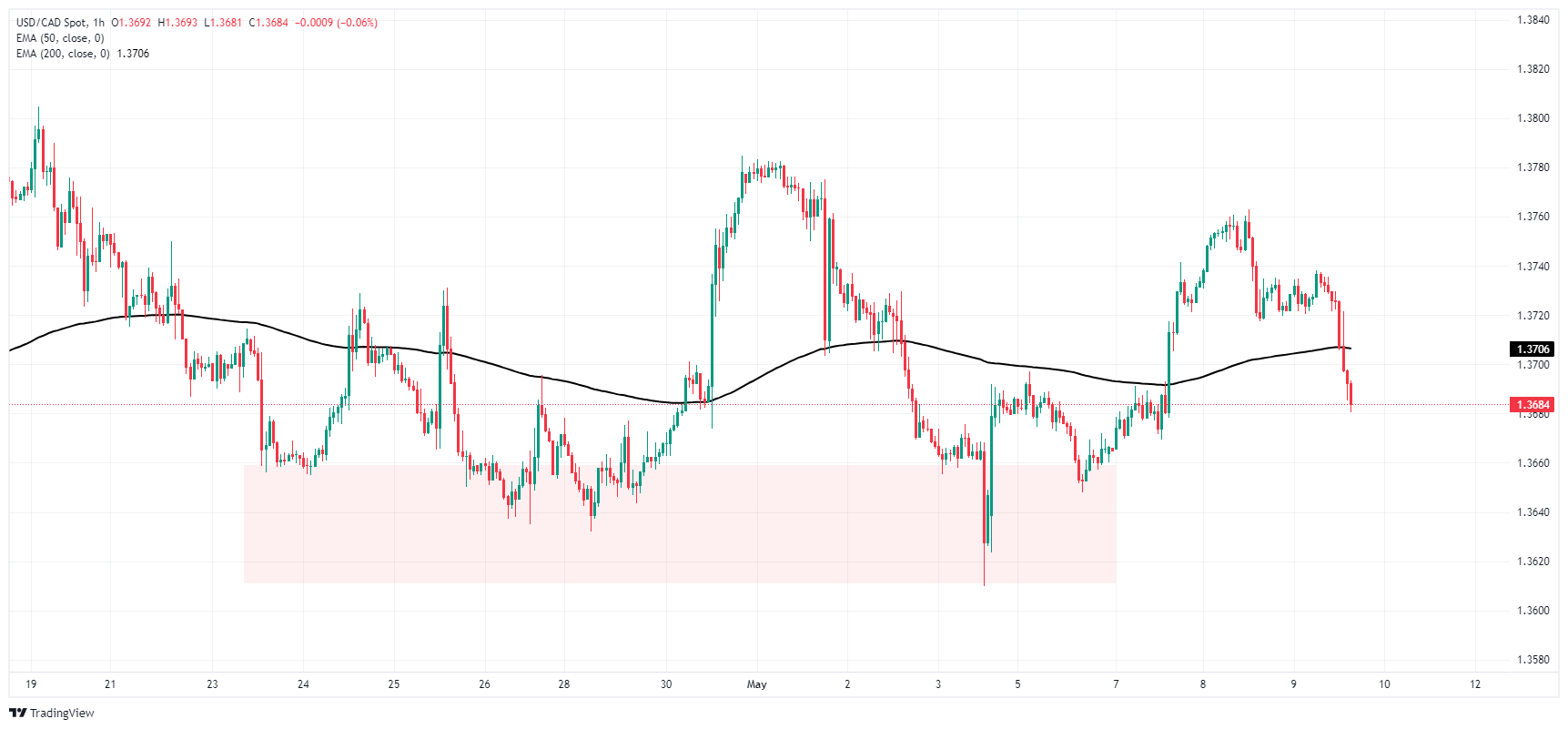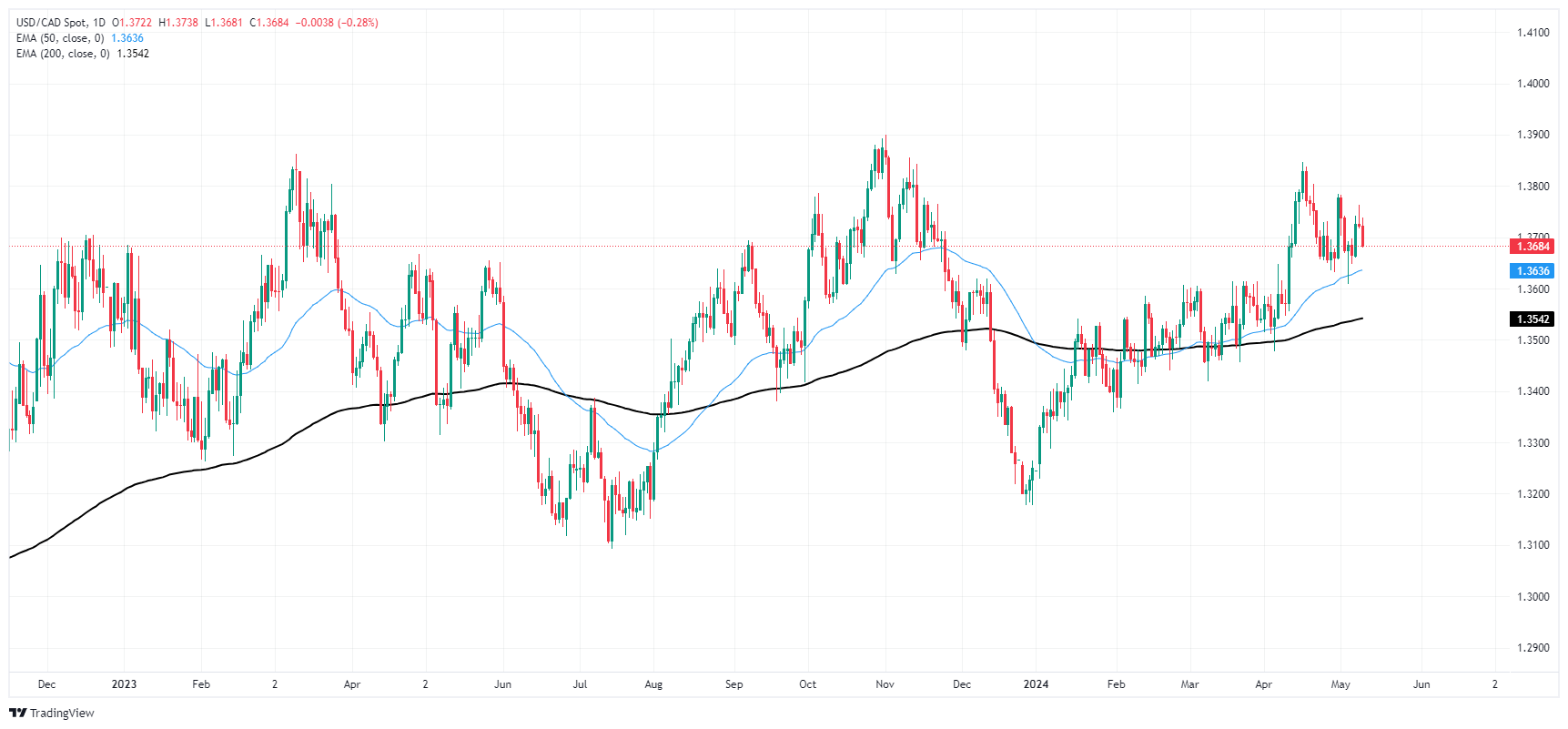Canadian Dollar climbs as Greenback recedes on Thursday

- Canadian Dollar propped up by broad-market, risk-on sentiment.
- Canada has a resilient financial system, says BoC Macklem.
- Canadian labor numbers slated to print on Friday.
The Canadian Dollar (CAD) found some bids on Thursday after investors’ risk-appetite stepped up, bolstering markets out of safe-havens like the US Dollar (USD). The Greenback is broadly softer on the day, and CAD traders are finding fresh buying momentum.
The Bank of Canada (BoC) delivered its latest Financial System Review during Thursday’s American market session. BoC Governor Tiff Macklem assured market participants that the Canadian financial system remains “resilient” overall, the BoC head noted that signs of stress are increasing. BoC Deputy Governor Carolyn Rogers also noted that while the number of small businesses reporting insolvencies has increased, the BoC doesn’t see this having broader implications for the Canadian economy.
Daily digest market movers: Canadian Dollar climbs again as BoC talks down risks
- BoC Gov Macklem:
- Canadian financial system remains resilient.
- Market expectations about timing of rate cuts could introduce volatility.
- Financial institutions adjusting to higher rates presents a risk to financial stability.
- Indicators of financial stress have risen.
- BoC Deputy Gov Rogers:
- The number of smaller firms filing for insolvency have increased, but could just mean normalization after years of below-average filings.
- Read more: BoC Gov Macklem, Deputy Gov Rogers
- Crude Oil markets remain tepid, crimping upside potential in CAD.
- Friday will close out the trading week with Canadian labor figures.
- The Canadian Unemployment Rate is expected to tick higher to 6.2% from 6.1%.
- April’s Canadian Net Change in Employment is expected to show a net increase of 18K new jobs additions, up from the previous month’s -2.2K decline.
Canadian Dollar price today
The table below shows the percentage change of Canadian Dollar (CAD) against listed major currencies today. Canadian Dollar was the strongest against the Japanese Yen.
| USD | EUR | GBP | CAD | AUD | JPY | NZD | CHF | |
| USD | -0.22% | -0.07% | -0.24% | -0.39% | 0.19% | -0.22% | -0.06% | |
| EUR | 0.22% | 0.15% | -0.02% | -0.16% | 0.37% | 0.00% | 0.16% | |
| GBP | 0.06% | -0.15% | -0.16% | -0.31% | 0.22% | -0.14% | 0.01% | |
| CAD | 0.25% | 0.04% | 0.19% | -0.14% | 0.43% | 0.04% | 0.19% | |
| AUD | 0.39% | 0.15% | 0.31% | 0.13% | 0.52% | 0.16% | 0.30% | |
| JPY | -0.20% | -0.37% | -0.21% | -0.39% | -0.51% | -0.34% | -0.22% | |
| NZD | 0.21% | 0.00% | 0.15% | -0.04% | -0.18% | 0.39% | 0.14% | |
| CHF | 0.08% | -0.14% | 0.01% | -0.17% | -0.31% | 0.22% | -0.14% |
The heat map shows percentage changes of major currencies against each other. The base currency is picked from the left column, while the quote currency is picked from the top row. For example, if you pick the Euro from the left column and move along the horizontal line to the Japanese Yen, the percentage change displayed in the box will represent EUR (base)/JPY (quote).
Technical analysis: Canadian Dollar claws back further ground from receding Greenback
The Canadian Dollar is broadly higher on Thursday, extending a rebound that started midweek. The Canadian Dollar is up around a third of a percent against the US Dollar, and climbed four-tenths of a percent against the Japanese Yen (JPY).
USD/CAD was dragged lower on the day, falling back below the 200-hour Exponential Moving Average (EMA) at 1.3708, and is approaching a near-term supply zone between 1.3660 and 1.3610. This week’s bullish swing fumbled from 1.3760, and swing highs are having a difficult time establishing footholds.
Daily candlesticks continue to trade north of 1.3650 as the pair finds support from the 50-day EMA at 1.3636. Despite a near-term bearish tilt pulling the pair down from the last swing high into 1.3850, the pair is still up on the year, trading up 3.3% from 2024’s opening bids of 1.3246.
USD/CAD hourly chart
USD/CAD daily chart
Risk sentiment FAQs
In the world of financial jargon the two widely used terms “risk-on” and “risk off” refer to the level of risk that investors are willing to stomach during the period referenced. In a “risk-on” market, investors are optimistic about the future and more willing to buy risky assets. In a “risk-off” market investors start to ‘play it safe’ because they are worried about the future, and therefore buy less risky assets that are more certain of bringing a return, even if it is relatively modest.
Typically, during periods of “risk-on”, stock markets will rise, most commodities – except Gold – will also gain in value, since they benefit from a positive growth outlook. The currencies of nations that are heavy commodity exporters strengthen because of increased demand, and Cryptocurrencies rise. In a “risk-off” market, Bonds go up – especially major government Bonds – Gold shines, and safe-haven currencies such as the Japanese Yen, Swiss Franc and US Dollar all benefit.
The Australian Dollar (AUD), the Canadian Dollar (CAD), the New Zealand Dollar (NZD) and minor FX like the Ruble (RUB) and the South African Rand (ZAR), all tend to rise in markets that are “risk-on”. This is because the economies of these currencies are heavily reliant on commodity exports for growth, and commodities tend to rise in price during risk-on periods. This is because investors foresee greater demand for raw materials in the future due to heightened economic activity.
The major currencies that tend to rise during periods of “risk-off” are the US Dollar (USD), the Japanese Yen (JPY) and the Swiss Franc (CHF). The US Dollar, because it is the world’s reserve currency, and because in times of crisis investors buy US government debt, which is seen as safe because the largest economy in the world is unlikely to default. The Yen, from increased demand for Japanese government bonds, because a high proportion are held by domestic investors who are unlikely to dump them – even in a crisis. The Swiss Franc, because strict Swiss banking laws offer investors enhanced capital protection.
